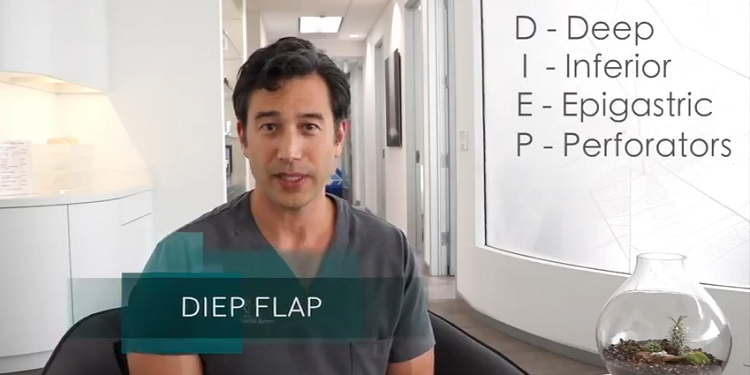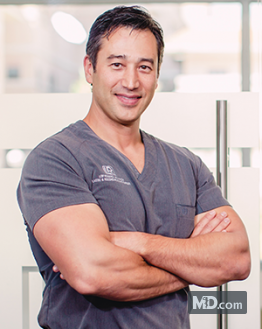How does Micro-Surgical Breast Reconstruction work?

Microsurgery is a common method of breast reconstruction for patients that have undergone a mastectomy. It’s a precise procedure that creates natural looking results. But just how does microsurgical breast reconstruction work.
How microsurgical breast reconstruction works
Microsurgical breast reconstruction is a specialized procedure that is designed to restore the appearance and texture of the breast, after a mastectomy. It involves using excess skin, fat, and vessels from other parts of the body to reconstruct the breasts.
The tissue and blood vessels are typically harvested from the abdomen, thighs, and buttocks, and then relocated to the breast. The tissue is referred to as the flap. The transfer of the tissue is accomplished with the aid of a microscope, and involves reconnecting the blood vessels at the new location, and shaping the tissue to resemble a normal breast. The blood vessels provide the nutrients needed for the new breast to thrive.
Breasts rebuilt using a patient’s own tissue are generally softer, and have a more natural look when compared to breast implants.
Types of microsurgical breast reconstruction
There are several microsurgical breast reconstruction techniques including DIEP flap, SIEA flap, TUG flap, SGAP flap, and IGAP flap.
DIEP flap
The Deep Inferior Epigastric Artery Perforator (DIEP) flap breast technique uses skin, blood vessels, and tissue from the lower abdominal wall to reconstruct the breast. The DIEP flap is one of the most common options for restoring the breast mound. The procedure uses the excess skin and fatty tissue from the lower abdominal area, but preserves the muscle. It also contours the lower abdomen at the same time.
SIEA flap
The Superficial Inferior Epigastric Artery (SIEA) flap also uses skin and fat from the abdominal region to recreate the breast, but it uses different blood vessels than DIEP. The DIEP flap uses blood vessels that go through or around the abdominal muscles, while the SIEA flap uses superficial blood vessels that are located just below the surface of skin in the lower abdomen.
TUG flap
The Transverse Upper Gracilis (TUG) flap rebuilds the breast using skin and tissue from the upper region of the inner thigh, along with a portion of the gracilis muscle. The gracilis muscle is located in the groin area of the medial or inner thigh. This method is often recommended for patients that do not have sufficient tissue and skin in the abdomen to perform a DIEP flap. Removing a part of the gracilis muscle does not usually result in loss of strength or function. The scar from the TUG flap is well-hidden within the groin crease.
SGAP flap
The Superior Gluteal Artery Perforator (SGAP) flap uses skin, blood vessels, and fat from the upper buttock to recreate the breast. This method is usually recommended for patients that do not have enough skin and fat in the abdominal area to perform the DIEP flap. THE SGAP flap is also recommended for patients that have previously had abdominal surgery which affected the blood vessels needed for the DIEP flap.
IGAP flap
Inferior Gluteal Artery Perforator (IGAP) flap surgery also reconstructs the breast using skin, fat, and blood vessels from the buttock. However, IGAP uses the inferior gluteal artery, whereas the SGAP uses the superior gluteal artery. The inferior gluteal artery is located in the lower region of the buttock near the pelvis.
Recovery after microsurgical breast reconstruction
Microsurgical breast reconstruction is a lengthy procedure that can take anywhere from 4-6 hours for a single breast. Patients generally have to remain in hospital for about 3 to 4 days. Surgical drains are fitted, and remain in place for 1-2 weeks.
Some post-surgical soreness and tiredness is to be expected. Light activity can be resumed about 2 weeks after surgery, but lifting and all strenuous activity should be avoided for at least 6 weeks. Downtime ranges from 4-6 weeks.
Which approach is right for you?
Your plastic surgeon will review the different microsurgical breast reconstruction options and determine which would be the most appropriate, based on your health and medical history.
Microsurgical breast reconstruction is available in Beverly Hills, and Pasadena, CA, at Privet Aesthetics.
Call 310-860-8915 for the office in Beverly Hills, or 626-537-3737 for the location in Pasadena, and schedule a consultation with board certified plastic surgeon Dr. Leif Rogers.



